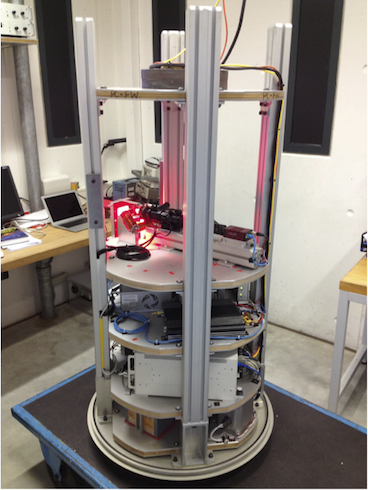Microswimmers in Convection-free Environment (MiCE)

research area: fundamental physics
experiment title:
Microswimmers in Convection-free Environment
experiment acronym: MiCE
funding agency: ESA
grant number: CORA - program
performing organization:
Faculty of Physics, University of Duisburg-Essen, Germany
prime investigator:
Dr. Jens Teiser
experiment objective
abstract
Active swimmers (particles with body fixed drive) in the micrometer range are of great interest as many organisms are in this size range. To manipulate microswimmers and to control their motion is of importance e.g. for in-vivo application as the delivery of drugs. Here, especially the collective motion of particle ensembles dominates. In current experimental studies the collective motion is influenced by hydrodynamic interaction between particles and particle-wall interactions, especially if the volume of the experiment is reduced to small sizes. If the volume is increased to prevent finite size effects, gravity has a strong influence on the particle dynamics. Particles sediment or are aligned by gravity or convection leads to motion of the complete system. In this case the hydrodynamic interaction cannot be separated from gravity-driven effects. The project MiCE is dedicated to analyze the motion of artificial microswimmers under microgravity conditions. In this case the motion of the particles can be studied without convection or influence by container walls. The particles are rods of two different materials with one part being ferromagnetic (Nickel based) and the other either of Silver or Gold. The asymmetric structure leads to particle motion in AC magnetic fields. The drop tower experiments are a study of feasibility, whether such processes can be analyzed under microgravity conditions.
experiment campaigns
experiment year: 2016
number of catapult launches: 16
experiment year: 2014
number of catapult launches: 16


 "
"